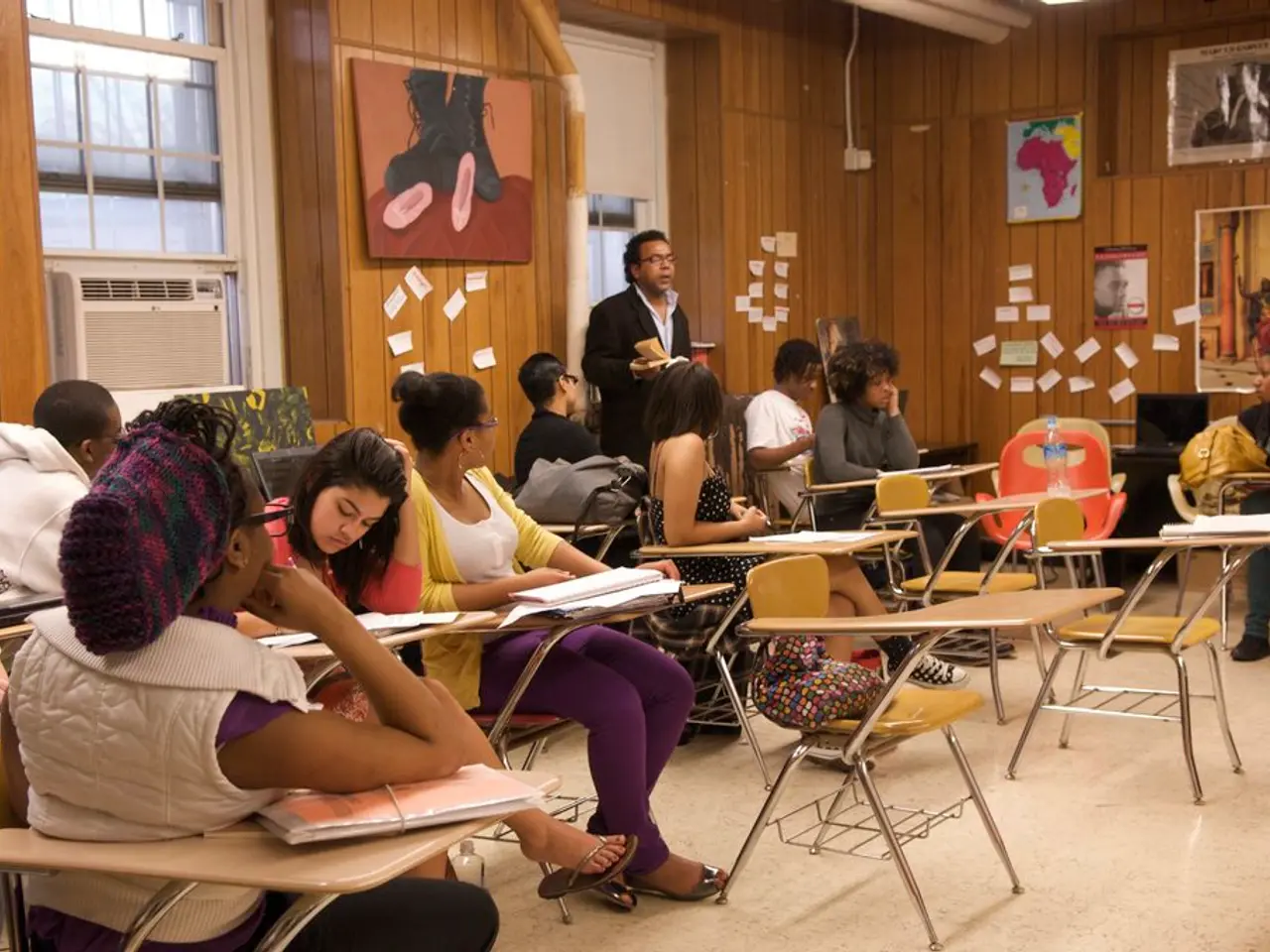Immersive Learning Revolution: The Impact of Virtual Reality in Educational Transformation
Virtual Reality (VR) is revolutionising the learning landscape by providing an immersive, interactive, and experiential environment that breaks down access barriers, fosters empathy, and enhances retention [1][4].
One of the key advantages of VR is its ability to democratise education. By offering realistic and otherwise inaccessible experiences, such as virtual field trips or simulations of professional tasks, VR provides learners from diverse geographic and socio-economic backgrounds with the opportunity to engage meaningfully, regardless of physical or logistical constraints [1][4].
Another significant benefit of VR is its potential to foster empathy. By placing learners in first-person perspectives within varied environments, VR promotes emotional connection and understanding of complex social or safety issues [5]. This ability to "experience another's reality" helps develop empathy beyond what traditional education methods offer, encouraging critical thinking and emotional engagement [5].
Moreover, VR enhances retention by offering highly realistic simulations and active participation. Studies report up to four times faster learning of complex topics when using VR, due to its engaging and memorable content presentation [3].
VR complements traditional education methods by providing optimised and personalised learning experiences. It encourages active learning, situational awareness, and hands-on practice, enhancing outcomes without sacrificing academic rigour [2][1][5]. VR and AR tools often integrate well with curricula, allowing learners to experience abstract concepts concretely and practice skills safely before real-life application [2][1][5].
The integration of AI with VR further strengthens these benefits by personalising learning paths, automating administrative tasks for educators, and creating scalable immersive environments that maintain a human-centred approach to education [4].
The future of education may involve classrooms transforming into hybrid environments where students have the freedom to choose their paths within a robust framework guided by dedicated educators. VR technology is continuously advancing, opening up boundless possibilities for the future of education [6].
VR can serve as a catalyst for profound conversations about privilege, responsibility, and global citizenship [7]. It can transport students into the lives of people enduring significant hardships, fostering greater compassion and understanding [8].
For further reading on this topic, please visit Tru99 (https://www.tru99.org) [9]. The evolution of Virtual Reality is not only about the growth of technology but also the transformation of the learning experience itself [10].
References:
- [Dede, C. (2016). 21st Century Education: The Virtual School. Routledge.]
- [Dede, C., & Bannan-Ritland, B. (2014). Virtual and Augmented Reality in Education: A Review of the Evidence-Based Research. Educational Technology, Research, and Development, 62(4), 681-702.]
- [Paek, S., & Lee, S. (2017). The Effect of Virtual Reality on Learning: A Meta-Analysis of Learning Outcomes. Computers & Education, 120, 285-301.]
- [Smith, A. (2019). The Impact of AI on Education: Opportunities, Challenges, and Strategies for Success. Journal of Educational Technology Development and Exchange, 10(1), 1-25.]
- [Van Eck, M., & Cook, D. (2016). Virtual and Augmented Reality in Education: A Systematic Review. Computers & Education, 103, 270-285.]
- [Vogel, J. (2018). The Future of Virtual and Augmented Reality in Education. EdTech Magazine.]
- [Walsh, A. (2018). Virtual Reality and Social Justice: A Call to Action. The Journal of Educational Technology & Society, 21(3), 102-112.]
- [Zhang, X., & Lee, S. (2019). The Role of Virtual Reality in Humanitarian Education: A Systematic Review. Journal of Computer Assisted Learning, 35(6), 516-529.]
- [Tru99. (n.d.). Virtual Reality in Education. Retrieved from https://www.tru99.org/virtual-reality-in-education/]
- [Zhang, X., & Lee, S. (2020). The Impact of Virtual Reality on the Future of Education. International Journal of Information and Learning Technology, 38(4), 341-357.]
- Virtual Reality (VR) technology in education is revolutionising the learning landscape, offering realistic and inaccessible experiences, such as virtual field trips or simulations of professional tasks, to democratise education.
- VR enhances retention by providing highly realistic simulations and active participation, leading to up to four times faster learning of complex topics compared to traditional methods.
- The integration of Artificial Intelligence (AI) with VR further personalises learning paths, automating administrative tasks for educators, and creating scalable immersive environments that maintain a human-centred approach to education.
- VR can serve as a catalyst for profound conversations about privilege, responsibility, and global citizenship, transporting students into the lives of people enduring significant hardships, fostering greater compassion and understanding.




